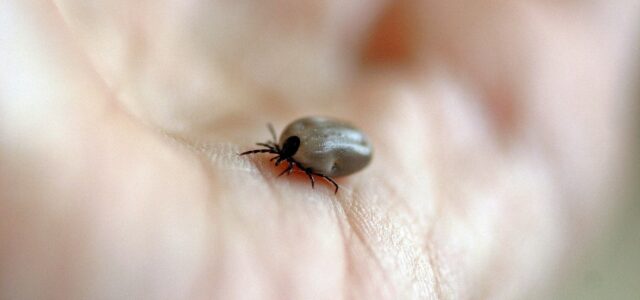Call for your appointment today 914-666-4665 | Mt. Kisco, New York

A study by Eisen and colleagues addressed a frequently asked question: “How long does it take to get Lyme disease?” According to their findings, the probability of an individual becoming infected with Borrelia burgdorferi (Bb), the pathogen which causes Lyme disease, increases the longer the tick is attached. [1]
Researchers found the risk increases:
- Approximately 10% after a tick has been attached for 48 hours;
- 50% after 63 – 67 hours;
- 70% by 72 hours;
- 90% for a complete feed.
The time it takes to become infected with the Lyme disease bacteria has “generated lively debate in the United States,” writes Eisen.
Several mouse studies indicate that a single tick bite from a nymph tick cannot transmit Lyme disease in less than 24 hours. But others disagree.
“The possibility that transmission of Lyme disease spirochetes could occur within 24 hours of nymphal attachment under unusual circumstances should not be discounted,” writes Eisen.
While the tick is attached, the Bb spirochete have time to multiply in the gut, escape into the hemocoel and invade and multiply in the salivary glands before transmitting the Lyme bacteria.
In a review article, Cook writes, “It is frequently stated that the risk of infection is very low if the tick is removed within 24–48 hours, with some claims that there is no risk if an attached tick is removed within 24 hours or 48 hours.” [2]
In animal models, transmission can occur in less than 16 hours, and “the minimum attachment time for transmission of infection has never been established.”
Spirochetes in tick salivary glands
Additionally, studies have found the presence of spirochetes in the tick salivary glands prior to the tick feeding, which could result in a rapid transmission of Borrelia burgdorferi bacteria.
Studies suggest, “in cases where the spirochetes are present in the tick salivary glands, they can be injected into the host during the preparatory transfers of antihistamines and anticoagulants prior to the commencement of feeding, ie, immediately after attachment of the tick to the host,” Cook writes.
There is also evidence that the transmission times and virulence varies depending upon the tick and Borrelia species, he adds.
Are you the tick’s 2nd meal?
A tick that is partially fed may be able to transmit diseases faster, Eisen explains.
“Partially fed ticks able to re-attach could result from detachment from dead animals or possibly by host grooming.”
Researchers have shown that infected I. scapularis nymph ticks which had been previously attached to a host for 24 – 48 hours, then removed and placed onto a new host, can effectively transmit B. burgdorferi spirochete within 24 hours of their re-attachment, Eisen writes.
Ticks harbor multiple diseases
Blacklegged ticks may be harbor multiple pathogens, leading to Lyme disease and/or other tick-borne infections.
In fact, studies have found that ticks can harbor up to a dozen different types of bacteria. And, some of these pathogens can be transmitted in less than 24 hours.
Several studies have shown that the Powassan virus can be transmitted within 15 minutes of tick attachment, while Anaplasmosis and Borrelia miyamotoi can be transmitted within the first 24 hours of attachment, explains Eisen.
Meanwhile, partially fed Amblyomma aureolatum ticks have been shown to transmit Rickettsia rickettsii in as little as 10 minutes after attachment.
[bctt tweet=”The longer a tick is attached, the greater risk of transmitting Lyme disease. ” username=”DrDanielCameron”]
Underestimating tick attachment time
There is, however, pitfalls in relying on tick attachment time to determine your risk of infection.
“Bites by I. scapularis nymphs often go entirely undetected and tick-bite victims typically underestimate how long a nymph was attached before it was detected and removed,” writes Eisen.
One study found that people “consistently underestimate the actual time the tick was attached prior to being discovered.”
Lastly, an individual would not know if they had been bitten by a partially fed tick, which would increase their chances of becoming infected and infected faster.
UPDATED: June 7, 2021
Related Articles:
The risk of a tick bite for pet owners
References:
- Eisen L. Pathogen transmission in relation to duration of attachment by Ixodes scapularis ticks. Ticks Tick Borne Dis. 2018.
- Cook MJ. Lyme borreliosis: a review of data on transmission time after tick attachment. Int J Gen Med. 2014;8:1-8. Published 2014 Dec 19. doi:10.2147/IJGM.S73791



